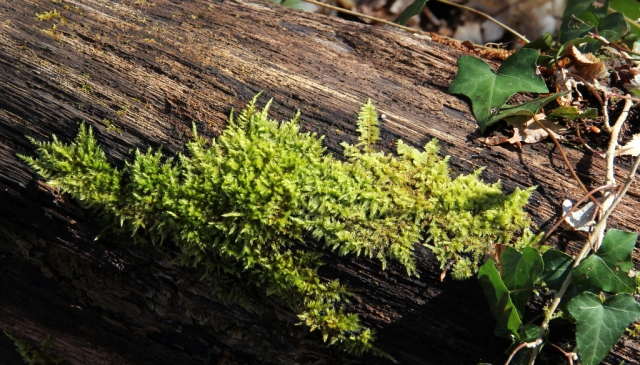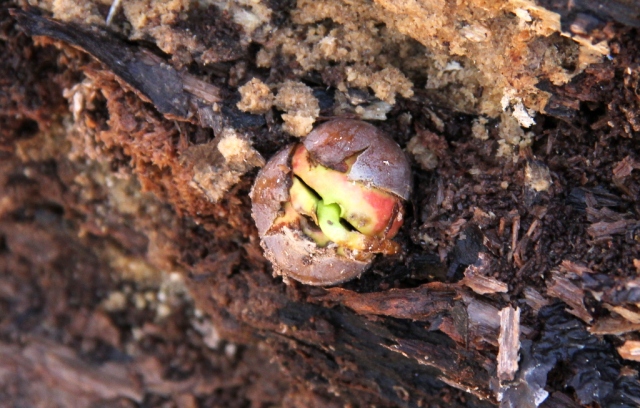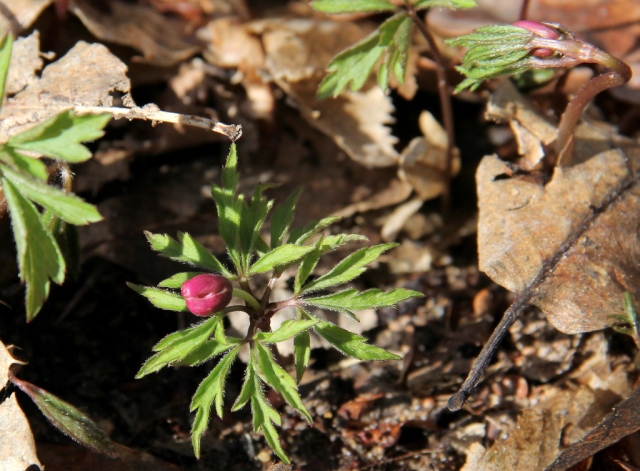It had been raining all morning and was forecast to continue raining in the afternoon. Then after lunch the sun appeared and we quickly flung on a waterproof, willing to accept walking in the rain later for some some sunshine in the present.
Despite the earlier rain most of the water had soaked into the sandy soil but there is much more moss in the woods this year.
This moss had found a moist base on a fallen tree trunk.
I’m not sure how this acorn had become so embedded into the same fallen tree trunk. Hardly a propitious site but the acorn had heard the call of spring and was germinating all the same.
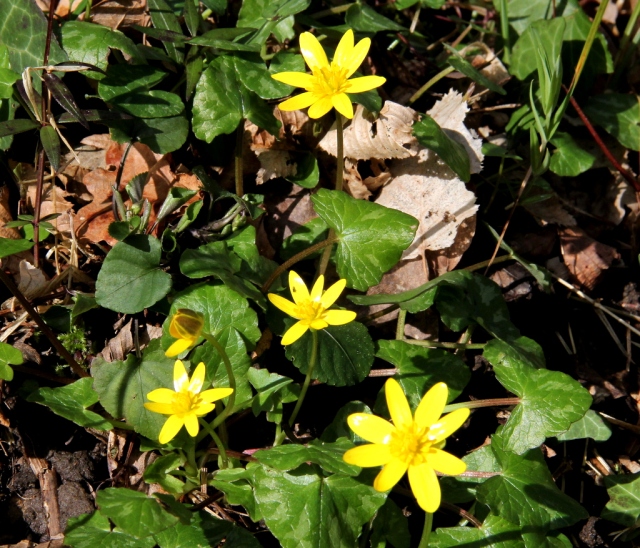
The Lesser Celandine has been out for some time now and the bright yellow flowers brighten up the woods.
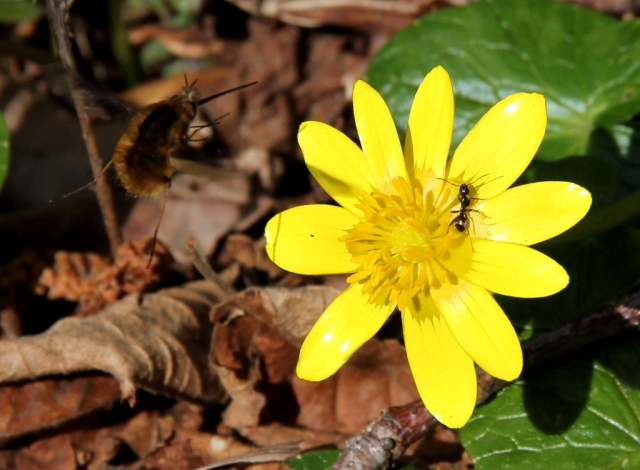
The Lesser celandine is a favourite with all sorts of insects, including bees, flies, hover flies and Bombylius major.

I only see these around in the springtime as they are parasitic on solitary bees, wasps and beetles. They lay their eggs near the nests of these species or on flowers that they visit. After hatching the larvae parasitise the host larvae which they consume. Not very nice.
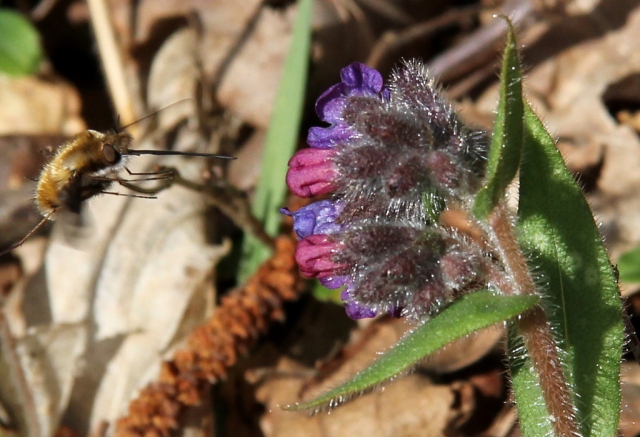
I usually like fluffy things but the Bombylius major doesn’t quite do it for me.
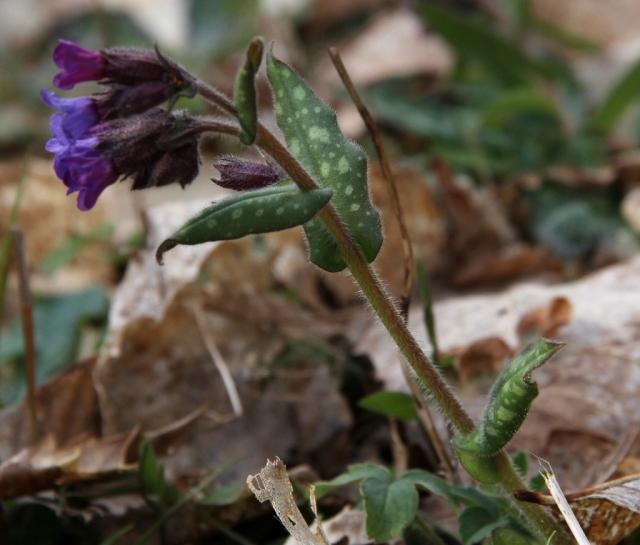
The Pulmonaria is opening now, it deserves its place minus the bee fly.
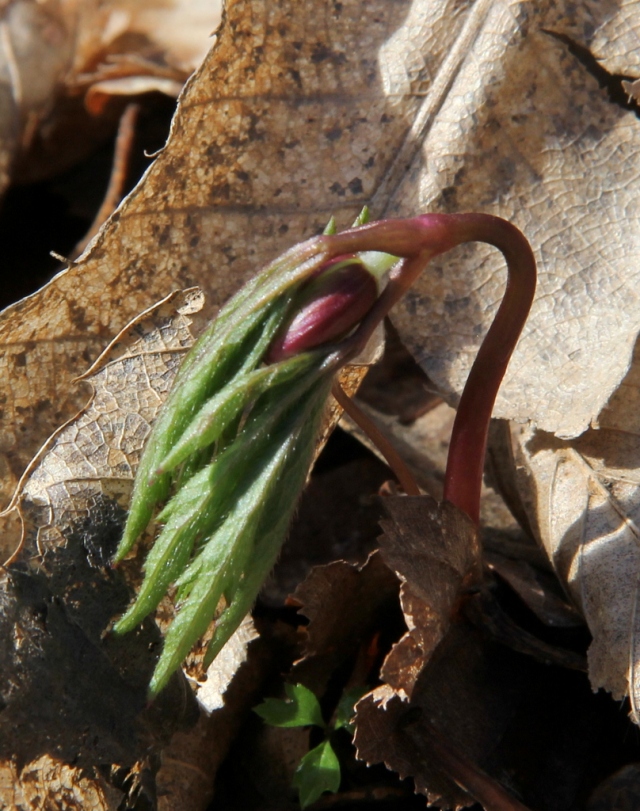
I saw my first wood anemones of the year but none in full flower.
They are usually white when fully open but the buds are usually pink in colour.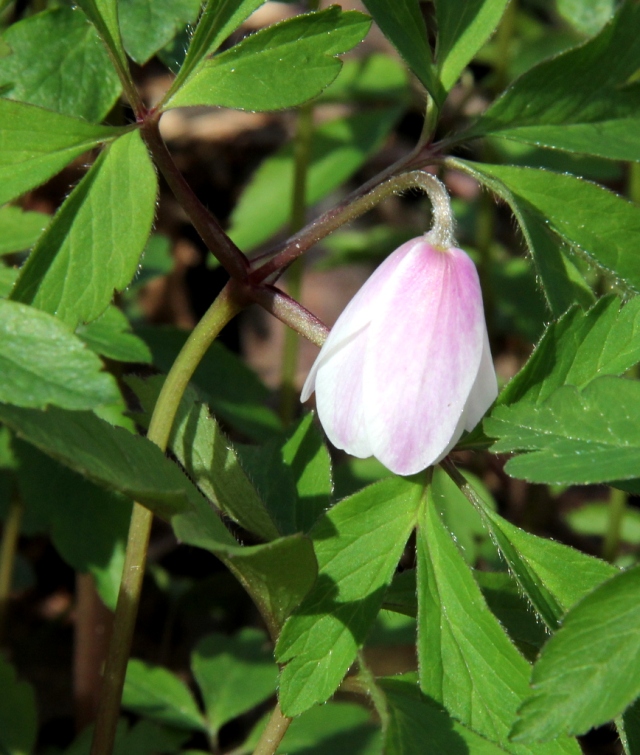
As the flower head matures the petals become paler in colour. They look so elegant just now as they are just breaking into flower.
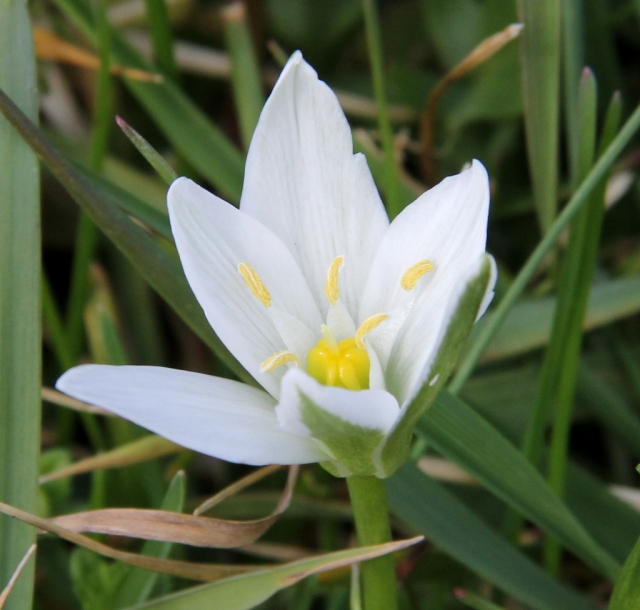
Another first sighting on the walk was my first Ornithogalum umbellatum or Star of Bethlehem. It is such an elegant flower that I prefer the French name of La Dame d’onze heures which I find much more fitting. She is elegant but not shy and does not disdain to grow in the “lawn” in our back garden. This causes a very irregular mowing pattern in the spring as my husband refuses to go over them with the mower.
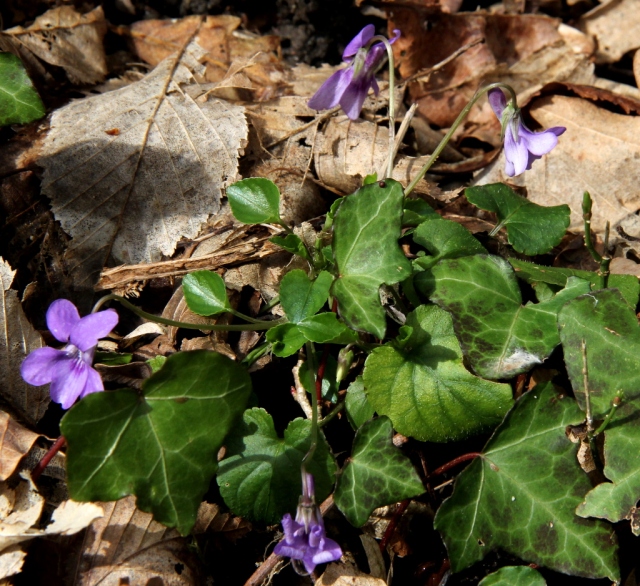
The dog violets were open in the woods and have been in the garden for a couple of weeks. Most of the violets are the unscented dog violets but I did find a clump of perfumed ones last year.
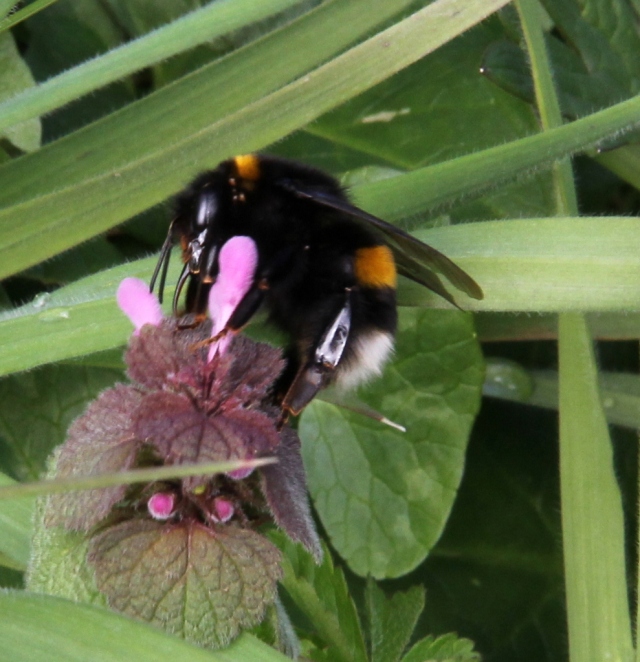
The queen white-tailed bumble bees (Bombus lucorum) is the most common bumble around us at the moment. I often see them on the look out for a likely nesting spot flying close to the ground, not interested in finding flowers. This one has no pollen so perhaps she too is on the look out for a good site.
So we managed our walk without getting wet. Just as well as the rain seems to have set in again.



